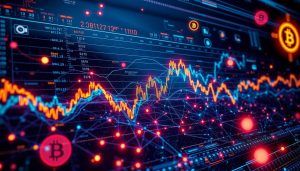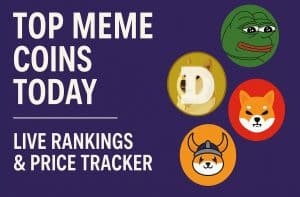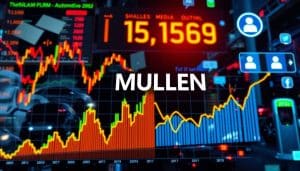Shiba Inu, a popular cryptocurrency, has been making headlines with its burn rate. Shiba burn rate refers to the process of sending SHIB tokens to addresses that no one can access, reducing the overall supply of tokens in circulation. This burning mechanism aims to increase the scarcity of SHIB tokens, potentially driving up their value.
Understanding the dynamics of SHIB token burns is crucial for investors and enthusiasts. As more tokens are sent to these “dead” wallets, the supply diminishes, which can impact the market dynamics significantly. The Shiba Inu community remains actively involved, with numerous initiatives focused on increasing the burn rate, reflecting a concerted effort to enhance the token’s market position.
To stay updated on the latest Shiba Inu burn statistics, you can visit the Shibburn and Shiba Burn Tracker websites. These platforms provide real-time data and insights, making it easier for you to track the token’s evolution and market trends.
Key Takeaways
- Shiba Inu’s burn rate reduces the overall token supply.
- Increased token burning can potentially raise SHIB’s value.
- Active community involvement supports Shiba burn initiatives.
Understanding Shiba Inu

Shiba Inu is a popular cryptocurrency that is often referred to as a “meme coin.” It started as a joke but has gained significant traction and attention.
Cryptocurrency Overview
A cryptocurrency is a digital or virtual currency that uses cryptography for security. Unlike traditional currencies, cryptocurrencies operate on decentralized networks based on blockchain technology. This allows for secure, transparent transactions without the need for intermediaries.
Shiba Inu is one such cryptocurrency, categorized as a meme coin. It gained popularity due to its quirky, fun approach and a loyal community dubbed the “Shib Army.” The coin has seen significant price movements, largely driven by community activities and notable events like Vitalik Buterin’s burning of SHIB tokens.
Shiba Inu’s Origins
Shiba Inu was created in August 2020 by an anonymous person or group known as “Ryoshi.” It was designed to be an experiment in decentralized community building. Initially, Shiba Inu had a massive initial supply of 1 quadrillion tokens.
A notable event in Shiba Inu’s early history involved sending half of its initial supply to Ethereum co-founder Vitalik Buterin. Buterin later burned most of these tokens by sending them to a dead wallet, also known as a genesis address. This action significantly reduced the supply and increased the scarcity of the remaining tokens, boosting their value.
Tokenomics of Shiba Inu
Shiba Inu’s tokenomics revolve around the supply and allocation of its SHIB tokens. Understanding these aspects gives insight into how this cryptocurrency operates and potentially increases in value.
Supply and Circulation
Shiba Inu initially created a staggering one quadrillion SHIB tokens. This large supply sets it apart from many other cryptocurrencies. Importantly, the circulating supply is different due to mechanisms like burns, which reduce the number of tokens over time.
Burning occurs when tokens are sent to an unusable wallet, effectively removing them from circulation. This process aims to increase scarcity and value. More than 410 trillion SHIB tokens have been burned since the token’s inception in 2020. This reduction in supply plays a crucial role in Shiba Inu’s market dynamics and price behavior.
Token Allocation
Half of the initial SHIB token supply was allocated to Uniswap for liquidity, ensuring that buyers and sellers can easily trade these tokens. The other half was sent to Ethereum co-founder Vitalik Buterin. Buterin’s actions significantly impacted SHIB’s supply; he donated a large portion to charity and burned the rest, lowering the total supply.
The allocation strategy uses SHIB, BONE, and LEASH tokens, each with distinct roles within the ecosystem. These allocations are designed to support various functions and initiatives within the Shiba Inu project. By understanding how these tokens are distributed and used, you gain better insights into the project’s financial structure and operational goals.
Shiba Burn Mechanics

Shiba Inu’s burn mechanics revolve around permanently removing tokens from circulation, which can help reduce supply and potentially increase value. The key aspects include burn addresses used to eliminate tokens and the various processes involved in executing token burns.
Burn Address
A burn address is a special type of wallet where tokens are sent to be permanently removed from circulation. These addresses are often referred to as “black hole” addresses because their private keys are unknown, making the tokens sent to them irretrievable.
Burn addresses are crucial for the burning process. By sending Shiba Inu tokens (SHIB) to a burn address, you ensure they cannot be accessed or spent. One example is the address used by Vitalik Buterin when he burned 90% of his SHIB holdings, which accounted for a significant portion of the total supply.
Token Burn Processes
Token burning requires following specific steps. First, the decision to burn tokens is made by the community or developers. Then, the tokens are sent from circulating supply addresses to predetermined burn addresses.
The SHIB community currently maintains a regular burn rate of around 21 burns per day, with over a quarter million tokens being burned daily. Special events or spikes can dramatically increase this rate. For instance, recent reports highlight a 364.05% surge in burn activity, underscoring the impact of coordinated burn efforts.
By understanding these processes, you can better appreciate how burning tokens influences the overall Shiba Inu ecosystem.
Market Dynamics and Burn Rate
The Shiba Inu token burn rate directly impacts its market dynamics, influencing factors like price movement and market cap. Understanding how token burns affect these elements can help you gain better insights into the Shiba Inu ecosystem.
Price Impact of Burns
The process of burning tokens reduces the total supply of Shiba Inu (SHIB). By decreasing the number of available tokens, scarcity increases, which often leads to price appreciation. For example, the recent surge in SHIB’s burn rate resulted in greater market anticipation of price increases.
Traders watch burn rates closely, as significant burns can lead to quick shifts in market sentiment and trading volume. When tokens are burned, demand may outpace supply, driving prices higher. Thus, burns often lead to more trading activity as investors react to price changes.
Burn Rate and Market Cap
The market cap of Shiba Inu is influenced by the burn rate. A higher burn rate means fewer tokens in circulation, which can lead to a higher market cap if the price per token increases. For instance, a 1055% surge in the burn rate can result in significant market cap adjustments.
Burn rate data helps you gauge the potential future value of SHIB. As tokens are permanently removed from circulation, the remaining tokens can gain value, impacting the overall market dynamics. This relationship demonstrates why monitoring the burn rate is crucial for understanding the market cap and potential investment returns.
Shib’s Ecosystem and Its Effects on Burn Rate
Shiba Inu’s ecosystem plays a crucial role in the burn rate of SHIB tokens. This ecosystem includes platforms like ShibaSwap and Shibarium, which significantly impact the rate at which tokens are burned. Understanding these components helps to see how they influence the overall supply and value of SHIB.
ShibaSwap and Shibarium
ShibaSwap is a decentralized exchange (DEX) within the Shiba Inu ecosystem. It allows you to trade SHIB, LEASH, and BONE. When transactions happen here, a portion of transaction fees collected might be burned.
Shibarium, Shiba Inu’s Layer 2 blockchain, is designed to make transactions faster and cheaper. This increased efficiency can lead to more transactions happening frequently, potentially increasing the burn rate. By promoting more transactions, the ecosystem drives higher token burns, reducing the supply of SHIB tokens over time.
SHIB’s Use Cases
SHIB tokens are used for various purposes within the Shiba Inu ecosystem. Beyond trading, SHIB is used in ShibaSwap for liquidity provision. Users can stake SHIB to earn rewards. These activities contribute to the token burn as well.
As new projects and applications emerge, the use cases for SHIB expand. The community often organizes burns to reduce supply intentionally. These use cases ensure that SHIB remains active within its ecosystem, supporting continuous token burning activities.
The Role of Exchanges and Wallets
Exchanges and wallets play a vital role in the burning of Shiba Inu tokens, impacting the overall supply and scarcity. This involves both active crypto exchanges and the special “dead wallets.
Crypto Exchanges
Crypto exchanges facilitate the trading and burning of Shiba Inu tokens. Some exchanges offer special burn events, reducing the circulating supply of SHIB. They do this by transferring a portion of transaction fees into wallets designed for burning.
Exchanges also support token burning by securing transactions on the blockchain. By ensuring secure and transparent operations, exchanges help maintain the trust needed for successful burn initiatives. Some exchanges, like Binance and Coinbase, have partnered with the Shiba Inu community to implement additional burning mechanisms through trading competitions and special promotions.
Additionally, exchanges provide the infrastructure needed to track and report burned tokens. Their front-end and back-end systems log these transactions on the blockchain, enabling the community to verify the amount of SHIB removed from circulation. This transparency is crucial for assuring investors of the burn process’s integrity.
Dead Wallets and Their Role
Dead wallets are special addresses where Shiba Inu tokens are sent and permanently locked. These wallets do not have private keys, meaning tokens sent there cannot be retrieved. This effectively removes them from the circulating supply.
The use of dead wallets ensures tokens are permanently burned. Vitalik Buterin, Ethereum’s co-founder, initially burned a significant portion of his SHIB holdings by sending them to a dead wallet, setting a precedent for future burns.
Dead wallets help create scarcity in the market, which can drive up the token’s value. The Shiba Inu community often organizes coordinated burns, encouraging holders to send tokens to these wallets. This collective action demonstrates the community’s commitment to increasing token value through strategic burns. Frequent updates on the number of tokens burned and the impact on supply are shared on official platforms to maintain transparency.
Community-Led Initiatives
The Shiba Inu community plays a crucial role in the token burn process, significantly impacting the value and scarcity of SHIB tokens. Various programs and platforms have emerged, driven by community efforts, to further these initiatives.
Shiba Inu Community
You are part of a vibrant and committed Shiba Inu community. This community is dedicated to reducing the total supply of SHIB tokens through consistent burning activities. The community has organized events and campaigns to promote these burns, ensuring everyone takes part. This collective effort helps to increase scarcity and, in turn, potentially boost the token’s value.
The community’s collaboration is evident in the creation of the Shib Burn Portal. This portal facilitates easy and efficient burning of tokens and tracks the progress. The platform enables you to see real-time updates and participate actively, knowing your efforts contribute significantly to the burn rate.
Community Burn Programs
Burn programs are at the heart of the Shiba Inu community’s initiatives. These programs include regular burn events and innovative mechanisms to reduce SHIB supply. One key program is the scheduled burn events where a substantial number of tokens are burned, creating hype and engagement among the community members.
Furthermore, the community has introduced methods such as Shibburn that provide detailed statistics on burn rates, helping you keep track of progress. These programs are not just limited to manual burns but also include automated systems, ensuring regular and consistent token burns.
Another notable initiative is community-driven projects where a portion of profits is dedicated to token burning. This multi-faceted approach demonstrates the community’s robust commitment to enhancing the Shiba Inu ecosystem.
Regulatory Environment
Shiba Inu’s burn rate is influenced by regulatory considerations, especially with respect to the role of the SEC and maintaining compliance and privacy protocols.
SEC’s Role
The SEC (Securities and Exchange Commission) plays a significant role in regulating cryptocurrencies. The agency ensures that digital asset transactions, including token burns, adhere to securities laws. If the SEC classifies a cryptocurrency under its jurisdiction, it must comply with stringent reporting requirements.
The classification dictates how tokens like Shiba Inu (SHIB) handle their burn processes. Missteps in compliance can result in legal repercussions. SEC regulations aim to protect investors from fraudulent activities, which can impact how transparent and secure SHIB token burns are conducted. Firms must ensure that burn statistics are reported accurately to avoid misleading investors.
Further, the SEC encourages greater transparency in token supply and burn activities. Keeping detailed records and publicly disclosing these events helps foster trust among users and stakeholders. Understanding the SEC’s role and abiding by its standards is crucial for SHIB’s future growth and stability in the market.
Compliance and Privacy
Compliance with regulations is essential for the long-term viability of any cryptocurrency, including Shiba Inu. The key aspects involve adherence to local laws where the tokens are traded and ensuring that burn activities are conducted transparently.
Privacy policies are equally important. Token burns must not compromise user privacy. Protecting personal data during transactions requires secure systems and robust encryption methods. These measures prevent unauthorized access and ensure that user data remains confidential.
Moreover, companies must maintain transparent policies that outline their data handling procedures. This includes detailing how transactions are recorded and the methods used to anonymize user data. Ensuring these practices are followed mitigates risks and enhances trust in the Shiba Inu ecosystem.
By emphasizing both regulatory compliance and strong privacy protocols, the integration of Shiba Inu token burns can proceed smoothly, benefiting both the market and individual investors.
Investor’s Guide to Token Burns
Token burns can impact the value of a cryptocurrency by reducing its supply. As an investor, it’s crucial to understand how token burns affect market dynamics and how to develop effective investment strategies.
Investment Strategies
When investing in cryptocurrencies that implement token burns, it is important to monitor the burn rate. A higher burn rate can lead to increased scarcity, potentially driving up the value of the remaining tokens.
Diversify your portfolio to include cryptocurrencies with consistent and transparent burn strategies. Look for communities actively engaged in burning tokens, as their commitment can signify long-term growth potential.
Also, consider historical burn data. Analyze past burn events and their impact on price and volume to predict future movements. Platforms often announce burn schedules; invest ahead of these dates for potential gains.
Understanding Market Trends
Staying updated on market trends is essential. Watch for announcements from key figures or organizations, such as Shiba Inu developers or other major token holders, as these can signal upcoming burns.
Pay attention to trading volumes. A surge in volume might indicate increased interest due to impending burns. Monitor price movements before and after burns to understand the market’s reaction.
Evaluate broader market conditions. Economic factors and market sentiment can also influence the effectiveness of token burns. Economic downturns might mitigate potential price gains from burns.
By staying informed and strategic, you can leverage token burns to make more informed investment decisions.
Future Prospects and Predictions
The Shiba Inu cryptocurrency has seen a significant boost in its burn rate, which could affect its price and scarcity in the future. This section looks at Shiba Inu’s roadmap and the predicted burn rates.
Shiba Inu’s Roadmap
Shiba Inu’s roadmap focuses on reducing the circulating supply of its tokens. By burning large amounts of tokens, the community aims to create scarcity, which could increase the token’s value. For instance, if the current surge in burn rate continues, it may amplify the scarcity narrative and attract more investors, boosting the price.
The roadmap also includes plans for further ecosystem development. These plans can include new projects and partnerships that could positively impact the token’s market performance. Keeping an eye on these initiatives is crucial for understanding the long-term value of SHIB.
Predicting Shiba Burn Rates
Predicting the burn rate is essential for gauging Shiba Inu’s future scarcity and price. Recently, Shiba Inu experienced a significant increase in its token burn rate, with data showing a 1055% surge over a 24-hour period. This drastic burn could continue if the community maintains its current efforts.
If Shiba Inu can maintain a high burn rate, like the projected 100 trillion tokens per year by 2025, the supply could significantly decrease. This reduction in supply would likely bolster the price of the tokens. In a best-case scenario, by 2030, the price could potentially reach $0.005 as the circulating supply diminishes.
Understanding these factors is important for anticipating how Shiba Inu’s market dynamics might change in the upcoming years.
Frequently Asked Questions
This section addresses common questions about the Shiba burn rate. Discover how the burn rate is calculated, current statistics, and how it might affect the coin’s value.
How is the Shiba Inu coin burn rate calculated?
The Shiba Inu coin burn rate is determined by the number of SHIB tokens sent to a specific burn address, rendering them unusable. Various platforms and tools monitor the frequency and volume of these transactions.
What is the current daily burn rate of Shiba Inu tokens?
The daily burn rate for Shiba Inu tokens can vary widely. For example, in January 2025, more than 9.6 billion tokens were burned over multiple instances.
Is there a regular schedule for Shiba Inu token burns?
There is no fixed schedule for Shiba Inu token burns. The timing and amount often depend on community initiatives and market conditions, contributing to irregular burn events.
How might burning Shiba Inu coins impact their value over time?
Burning Shiba Inu coins reduces the total supply of tokens in circulation, potentially increasing the scarcity. This scarcity narrative can drive up demand and, consequently, the price of SHIB over time.
Can investors participate in the Shiba Inu token burn process?
Investors can participate in the Shiba Inu token burn process by sending their tokens to the designated burn address. This helps decrease the overall supply and supports the community-driven effort to raise the coin’s value.
What percentage of the total Shiba Inu supply has been burned to date?
As specific figures change frequently, checking reliable sources or official announcements is crucial for the most current data on the percentage of Shiba Inu supply burned. Shiba Burn Tracker provides updates on these statistics.
























 Bitcoin
Bitcoin  Ethereum
Ethereum  Tether
Tether  XRP
XRP  USDC
USDC  Wrapped SOL
Wrapped SOL  Lido Staked Ether
Lido Staked Ether  TRON
TRON  Dogecoin
Dogecoin  Cardano
Cardano  Figure Heloc
Figure Heloc  WhiteBIT Coin
WhiteBIT Coin  Wrapped stETH
Wrapped stETH  Bitcoin Cash
Bitcoin Cash  Wrapped Bitcoin
Wrapped Bitcoin  USDS
USDS  Chainlink
Chainlink  Wrapped eETH
Wrapped eETH  Binance Bridged USDT (BNB Smart Chain)
Binance Bridged USDT (BNB Smart Chain)  LEO Token
LEO Token  WETH
WETH  Hyperliquid
Hyperliquid  Monero
Monero  Stellar
Stellar  Zcash
Zcash  Ethena USDe
Ethena USDe  Coinbase Wrapped BTC
Coinbase Wrapped BTC  Litecoin
Litecoin  Sui
Sui  Avalanche
Avalanche  Hedera
Hedera  Shiba Inu
Shiba Inu  sUSDS
sUSDS  USDT0
USDT0  Dai
Dai  Mantle
Mantle  PayPal USD
PayPal USD  Toncoin
Toncoin  World Liberty Financial
World Liberty Financial  Cronos
Cronos  Ethena Staked USDe
Ethena Staked USDe  Uniswap
Uniswap  Polkadot
Polkadot  MemeCore
MemeCore  Aave
Aave  Bittensor
Bittensor  USD1
USD1  Rain
Rain